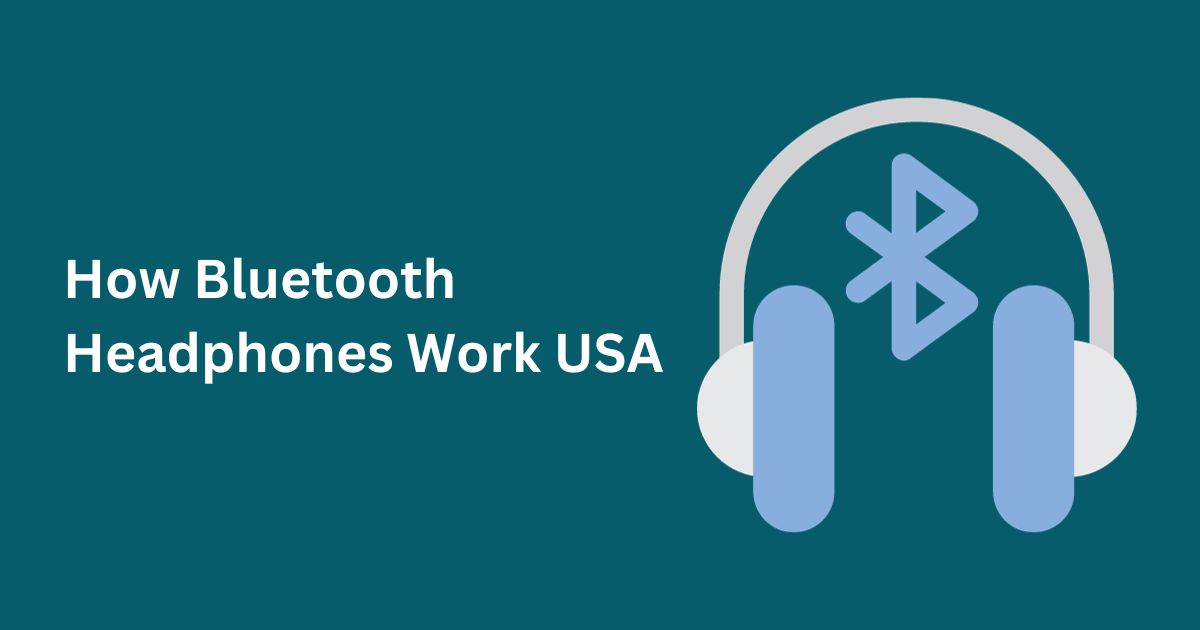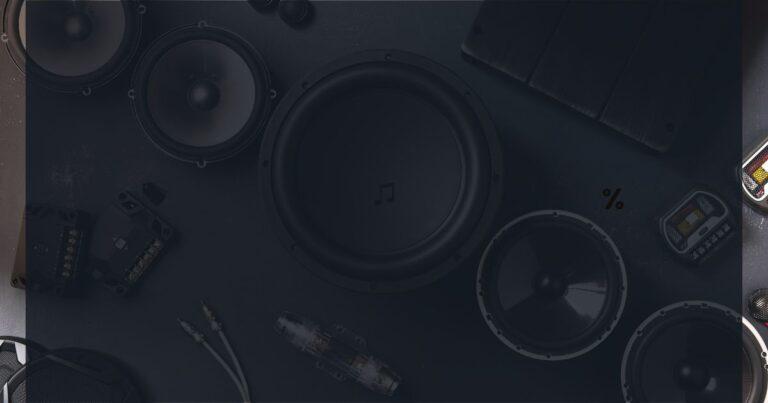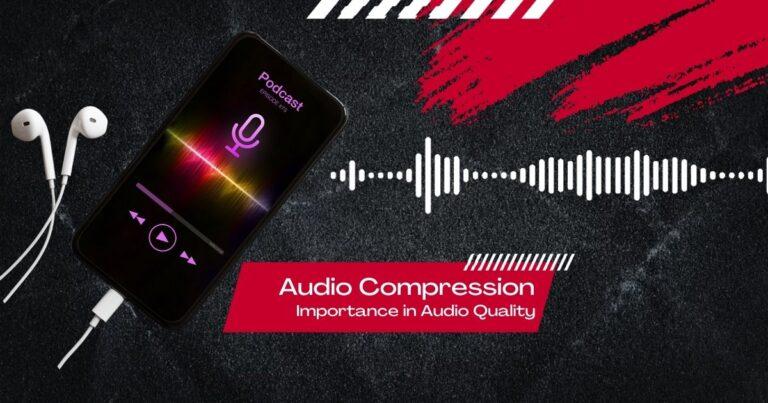How Bluetooth Headphones Work USA [2023]
This post has affiliate links. We get commissions for purchases made through links in the post
How Bluetooth headphones work USA? This a question, we will answer in this post. Let’s explore.
Starting from classroom learning to over 10 years of writing, I learned that Bluetooth headphones work by wirelessly transmitting audio signals from a source device, such as a smartphone, tablet, or computer, to the headphones themselves.
This technology uses short-range radio waves to establish a connection between the source device and the headphones, allowing for a cable-free listening experience.
As we go further with you and the topic of this discussion is how Bluetooth headphones work, it’s also a good idea to understand the Bluetooth range.
If you have missed it, you would also like to read about understanding Bluetooth range and know more about it.
Thus, the basic understanding of the Bluetooth range is simply distance within a radius the Bluetooth-enabled device provides the lag-free connection.
In more sophisticated words, it’s the range that a Bluetooth connection functions between devices is referred to as Bluetooth range.
To understand Bluetooth, assume it as an electronic cord connecting your smartphone and wireless headphones.
How far you can move away from your source device without losing the connection depends on the length of this “rope”. This means the distance the Bluetooth connection covers.
The typical Bluetooth device range is approximately 10 meters (33 ft).
Nevertheless, obstructions such as walls, interference from other gadgets, and the specific Bluetooth version used also have an impact on this range.
You can therefore walk freely within that 33-foot radius without losing connection. But if you step outside of it, you may have audio dropouts or disconnections.
Why Bluetooth Headphones Get Static Interference
We know this is a very interesting question in the context of how Bluetooth headphones work. Therefore, we will also look at why headphones get static interference in this section.
Have you ever wondered why Bluetooth headphones get static interference? We have answered this question to you.
You are an audiophile and frequently use Bluetooth headphones. So must have experienced static interference. Right! I have occasionally experienced this with my Bluetooth headsets.
This is a little annoying.
Radio frequency (RF) interference from electrical devices in close proximity is frequently the source of this interference.
Static on your headphones is the result of multiple radio stations using the same frequency to broadcast.
For example, microwave ovens, cordless phones, and Wi-Fi routers are common offenders. Static can also result from physical obstructions like walls weakening the Bluetooth signal.
The 2.4 GHz ISM band, which is congested with many different devices, is used by Bluetooth headphones.
You can try putting other gadgets farther away, getting closer to your audio source, or wearing headphones with sophisticated noise-canceling capabilities to reduce static.
Your Ears are Old Enough for Bluetooth Headphones
Here’s why your ears are indeed mature enough for Bluetooth headphones. No matter the user’s age, Bluetooth headphones are made to fit a variety of needs.
They are easy to use and available in a range of sizes and designs to suit a variety of ear shapes.
Everybody enjoys a wire-free listening experience with Bluetooth headphones, regardless of age, from tech-savvy teens to experienced adults.
Finding a pair that fits your tastes and has high sound quality is crucial.
Therefore, selecting the best Bluetooth headphones for your needs and hearing preferences is more important than the age of your ears.
How Do Wireless Earbuds Work?
We see a majority of people using wireless earbuds in their daily lives. Earbuds have been a very popular audio device over a short period of time. These are compact, handy, and easy to use.
We have also explained in detail how do wireless earbuds work. This will give you a very good insight into it.
More importantly available to match every pocket.
The technology “Bluetooth” is used by wireless earphones to transfer audio signals from a source device like a smartphone or tablet to the earbuds.
Your device turns audio into a digital signal when you play music or make a call. The earbuds receive this digital signal wirelessly over Bluetooth.
Speakers, a digital-to-analog converter (DAC), and a Bluetooth chip are among the parts found inside the earphones.
The audio data is received by the Bluetooth chip, and it is converted into analog signals by the DAC so that the speakers can hear it. Your ears get the sound as a result, and no physical wires are required.
Audio Frequency Response Over Bluetooth
When we speak of how Bluetooth headphones work, we also have the audio frequency response system of this technology.
What is the audio frequency response over Bluetooth?
This is a question you should ask as a Bluetooth headphones user. I am sure you already have this question in your mind and looking for an answer. Yeah!
So, the answer is, the range of frequencies that Bluetooth technology can wirelessly transfer from a source device to your speakers or headphones is known as audio frequency response over Bluetooth.
Bluetooth can handle most audio information well because it typically covers a wide range of frequencies.
Nevertheless, a number of variables, like the Bluetooth version, the particular audio codec being used, and the caliber of the audio equipment affect the precise frequency response.
AAC and aptX are two examples of modern codecs that provide improved support for high-quality audio. They allow a wider frequency range and improve the listening experience.
Thus, even though Bluetooth provides exceptional wireless convenience, the gear and technology being used can affect the audio frequency response quality.
Headphone Wireless Technology You Must Know About
As headphones enthusiasts, you are using different types of wireless technology with your headphones.
Wireless communication has made a significant advancement over the past few years. We have covered a lot about headphone wireless technology you must know about.
As we are discussing how Bluetooth headphones work, you also need to understand the concept of headphone wireless technology.
So, there are a few crucial concepts related to headphone wireless technology that you should know. The most popular wireless technology in headphones is Bluetooth.
It allows you to eliminate the need for cables when connecting your headphones to your devices.
NFC (Near Field Communication) is another key concept. It makes pairing easier by enabling you to quickly connect your headphones to your device by simply tapping them together.
Furthermore, you also come across acronyms like AAC and aptX, which are codecs for music that improve wireless audio transmission quality.
These technological advancements are essential to providing a flawless and excellent wireless listening experience.
How Do Wireless Headphones Work?
Bluetooth and wireless technology is often used interchangeably. But there is a slight difference. But in our context of how Bluetooth headphones work, we are not going to deep dive into wireless.
Let’s keep it short.
So, in order to connect wireless headphones to a source device, like a computer or smartphone, they use radio waves rather than physical wires.
A transmitter in the source device and a receiver in the headphones are involved in the process. The audio on your device is transformed into a digital signal when you play it, and the headphones receive this signal wirelessly over Bluetooth or other wireless technologies.
This digital stream is decoded, transformed to analog audio inside the headphones, and then played back over the speakers.
Your experience of listening to music or sound will be convenient and cord-free as a result of the absence of tangled cords.
How Harmful is Bluetooth Radiation?
The application of technology across the spectrum is good. It also brings many advantages but also certain disadvantages.
The radiation that Bluetooth devices generate is categorized as non-ionizing.
This means that, unlike ionizing radiation (such as UV or X-rays), it does not contain enough energy to ionize molecules or atoms or cause cellular harm.
Like Wi-Fi, Bluetooth radiation uses the 2.4 GHz frequency spectrum to function at a low power level.
There are no current health dangers associated with the radio waves used in Bluetooth communication, which are widely regarded as safe.
As with any technology, though, it’s crucial to use Bluetooth devices sparingly and be mindful of any possible risks associated with extended close-range exposure.
When recommended usage guidelines are followed, the impact on health is negligible.
Bluetooth Range: How Far Does Bluetooth Reach?
We all use Bluetooth-enabled devices. But how many of you are really aware of the distance the Bluetooth can cover? Very few, right?
Thus, in this section, we will look at the range the Bluetooth-enabled device your Bluetooth headphones can cover.
In a perfect, clear setting, Bluetooth range can reach up to about 10 meters (33 ft). The real-world range can differ, though.
Bluetooth’s range is influenced by a number of variables, such as the Bluetooth version being used, interference from objects and walls, and electronic devices sharing the same frequency range.
In general, Bluetooth 4.0 and subsequent versions provide more stability and range than earlier generations.
For a dependable connection when utilizing Bluetooth devices, you must remain inside the designated range.
Signal failures and disconnections may result from crossing this threshold. A flawless wireless experience is thus ensured by being aware of Bluetooth’s reach.
How Does Bluetooth Pairing Work
Bluetooth pairing is the process that helps establish a wireless connection between two devices, like your smartphone and headphones.
When you start pairing your headphones, the devices exchange unique identification codes to ensure a secure connection.
This typically involves the following steps:
Enable Bluetooth: Turn on Bluetooth on both the source device (e.g., your smartphone) and the target device (e.g., your headphones).
Discoverable Mode: Make the target device discoverable so it can be found by other devices.
Pairing Request: Start pairing from the source device, and it will search for nearby devices. When it finds your target device, it sends a pairing request.
Confirmation: The target device often displays a code or prompts for confirmation to complete the pairing.
Once accepted, the devices are paired, and they can communicate securely, allowing you to enjoy wireless audio or other functionalities.
How Bluetooth Works Step By Step
Bluetooth technology operates through a series of steps to establish wireless connections between devices:
Initialization: Both devices, like a smartphone and wireless headphones, must enable Bluetooth and enter a discoverable mode to find and be found by other devices.
Device Discovery: The source device, for example, your smartphone searches for nearby Bluetooth devices, like your headphones.
Pairing Request: The source device sends a pairing request to the target device. This request includes a unique key.
Acceptance: The target device displays the pairing request, and you confirm the connection. It then generates the same key or passcode.
Secure Connection: The devices now share the same key, ensuring a secure connection. They can exchange data, like music or phone calls, over Bluetooth.
These steps create a seamless wireless experience, making Bluetooth a prevalent and user-friendly technology.
How Does Bluetooth Work with Cell Phone
As we go on and explore how Bluetooth headphones work, it’s a legitimate question to ask “how does Bluetooth work with cell phones”.
In order to function with cell phones, Bluetooth creates a wireless connection for a number of uses.
Your phone and a compatible device, like a car stereo or wireless headset create a secure link when you pair your phone with Bluetooth enabled.
The devices exchange identifying numbers. You can wirelessly stream music, make hands-free calls, and move files across devices using this connection.
The audio or data is encoded by the cell phone and sent wirelessly to the linked device. Bluetooth makes your phone more versatile and connects easier, which makes it a useful tool for a variety of uses.
Does Bluetooth Use Radio Waves Or Microwaves
Radio waves, more precisely those in the 2.4 GHz ISM (Industrial, Scientific, and Medical) band, are used in Bluetooth technology.
Despite being at the lower end of the microwave spectrum, these radio waves are still within the microwave frequency range.
Although Bluetooth works in the microwave range, it’s important to remember that the energy levels used for Bluetooth transmission are extremely low and non-ionizing. This means they don’t have enough energy to harm cells.
Therefore, although using microwave frequencies, Bluetooth is safe for wireless device connection and does not pose any health hazards similar to those linked with higher-energy microwave radiation, such as those from cell phone towers or microwave ovens.
Conclusion: How Bluetooth Headphones Work USA
In conclusion, Bluetooth headphones are a popular option for music enthusiasts and people who are constantly on the go since they provide the ease of wireless audio streaming.
These headphones connect to your smartphone, take in digital music, transform it into analog signals, boost the volume, and send the sound straight to your ears.
While Bluetooth headphones have undergone technological advancements to offer improved sound quality and longer battery life, the fundamental ideas of hassle-free listening and wireless communication have not changed.
You can choose the best pair of headphones to improve your listening experience by being aware of how Bluetooth headphones operate.
Frequently Asked Questions (FAQs) on How Bluetooth Headphones Work USA
A: Bluetooth headphones generally have a range of up to 10 meters (33 feet) in an ideal, unobstructed environment. However, this range can vary depending on factors like Bluetooth version and interference.
A: No, the audio quality can vary based on factors like the Bluetooth codec used, the quality of the headphone components, and the version of Bluetooth. Some advanced codecs, like aptX and AAC, offer better audio quality compared to standard codecs.
A: Bluetooth headphones can connect to a wide range of devices, including smartphones, tablets, and computers. However, compatibility can vary, so it’s essential to check whether your device supports Bluetooth and the appropriate profiles for your headphones.
A: The pairing process involves enabling Bluetooth on both the headphones and your device, making the headphones discoverable, and then confirming the pairing request when your device detects the headphones. Specific steps may vary depending on your device’s operating system.
Bluetooth headphones use low-power, non-ionizing radio waves, making them generally safe for use. The radiation levels are much lower than those associated with higher-energy microwave radiation, like those from microwave ovens or cell phone towers. However, it’s essential to use Bluetooth devices in moderation and within recommended guidelines.
- How Do Wireless Earbuds Work? Wireless Earbuds Explained - 25- December, 2023
- Headphone Wireless Technology You Must Know About - 20- December, 2023
- 7 Best TWS Earbuds for Small Ears USA 2024: Top 4 Earbuds You Must Buy - 18- December, 2023







